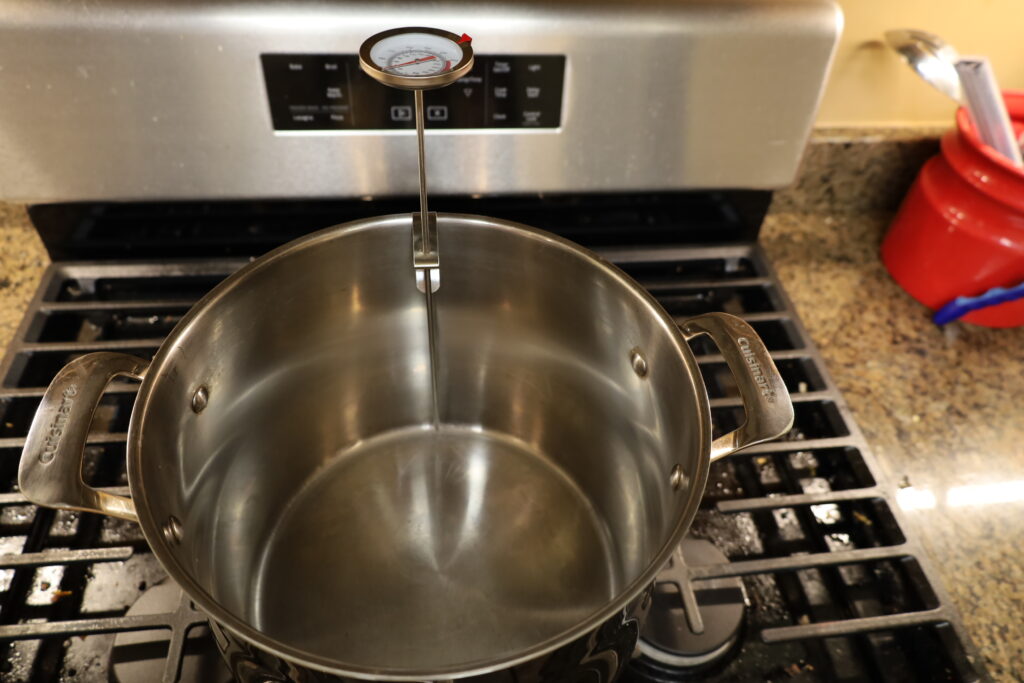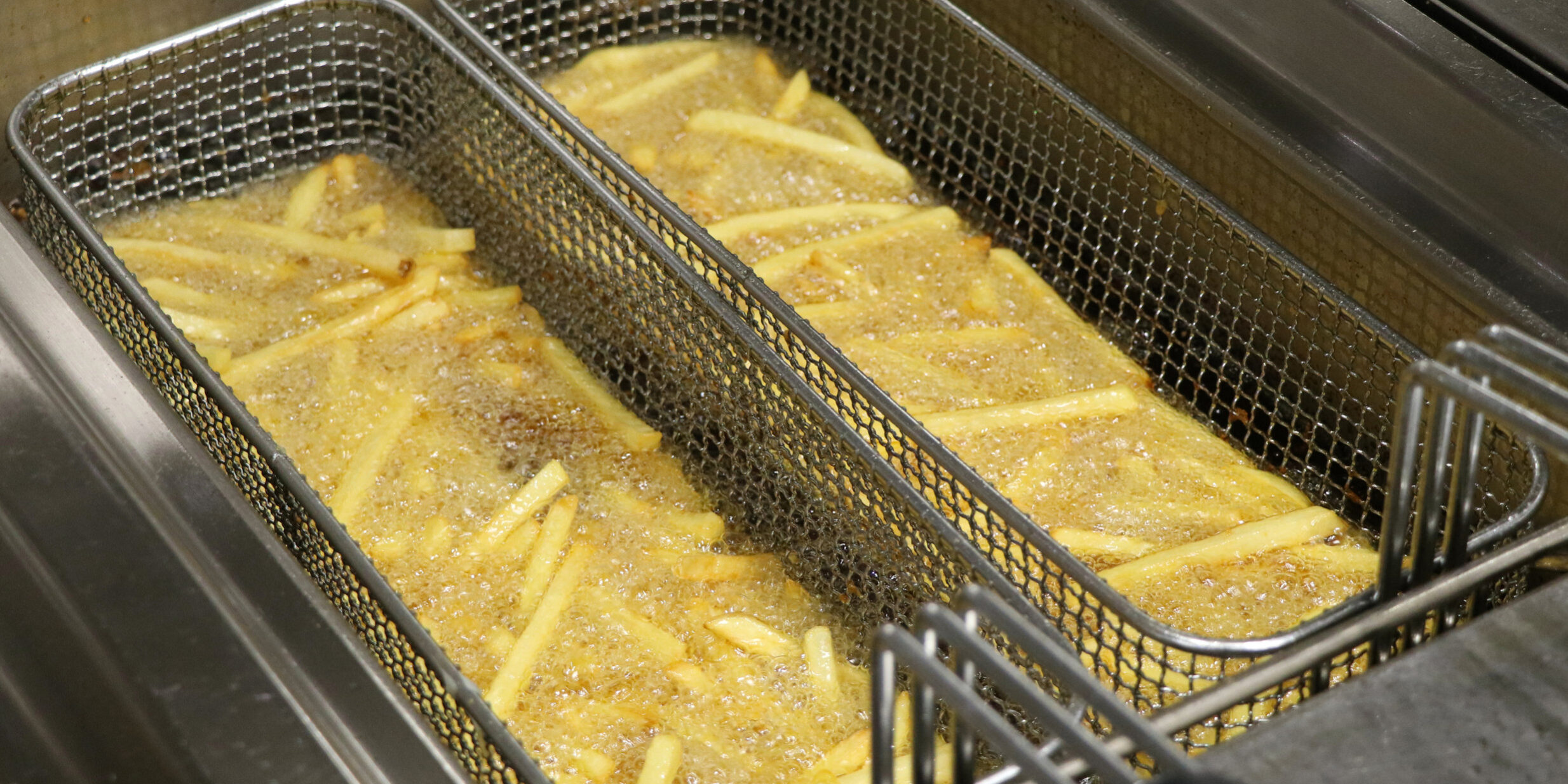What is deep frying? This technique has been called deep fat frying, frying, deep oil frying and other names and is the cooking method of submerging food in very hot oil, 350-357 degrees F. The oil quickly cooks the outer layer of the submerged food, sealing the center and resulting in a moist interior and crusty exterior of a beautiful golden color.
Deep frying is a wonderful cooking technique and gives delicious results. Many feel this form of cooking is “unhealthy”, but when you read such statements, you realize that they are referring to the fast-food type of deep frying, not the at home version. The term “fast food” deep frying frequently means that one is eating many of their meals at a Mcfast-food.
However, frying at home engenders concern especially for those who have never used this technique.
A diet high in unsaturated fat is unhealthy however, having fried foods on occasion is no problem. Actually, diets high in refined sugar are probably much less healthy than fried foods. In fast food oil stays on the burner for hours to days, is reused day after day and frequently food is cooked at too low a temperature with resultant absorption of oils. Frying at home as opposed to fast-food deep frying is without question healthier.
Home deep frying and fast-food deep frying are different. “Moderation” is always the key for most things. Deep frying at home, or an occasional fast-food meal, will not poison you or reduce your longevity. Cooking by deep frying at home can be fun, safe and delicious. Deep frying carries hazards and risks, although with care and focus you can use this cooking technique without fear and enjoy it’s benefits. The risks include pans or pots being tipped over spilling the oil and causing serious burns, overfilling the pan and spilling of oil with resultant fires or burns, and the sides of the pot or pan becoming very hot also causing burns. Fires should always be of concern to the home cook. In a previous Blog I discussed safety in the kitchen spending time on the issues of fire. A fire in the home can spread literally within minutes. Further, it takes only a small amount of oil on the burner for a fire to develop. But there is no reason to fear. Following simple rules can reduce the risks. Further practice makes perfect, just don’t let familiarity breed contempt, always be alert and focused.

Safety Tips
1) Use a deep pot with a wide base, such as a Dutch oven. This reduces chances of tipping over and reduces splatter. Make sure the handle points away from the area of work.
2) As with so much in the kitchen reduce distractions, keep pets and children away from the area in which you are frying. Once you start the deep frying, do not leave it. Do not answer phone calls or multitask. A fire can start within seconds and take out your house in minutes. Stay alert, focused and aware.
3) Once you put the pot on the stove the oil has been added and it is hot, do not move it! Even if a fire develops, moving it will spread the fire and you will be burned in the process. Cover with a pot lid and get the fire extinguisher.
4) Place your utensils close to your work area and plan on where you will keep the items to be cooked, and where you will place the items already cooked. Going from left to right makes sense to this author.
a. I use a stainless steel spider which is an essential utensil if you are going to deep fry.
5) I use canola or corn oil, but other oils with a high smoke point work as well. Make sure you have enough oil for the items to submerge, but not more than 1/2 of the way up the side of the pot. Remember you are adding volume which will raise the level of the hot oil.
6) Use an attached thermometer. I like the types that attach to the side of the pot and don’t require wires. You should watch the oil temperature continuously. If the oil increases greater than 375, you need to
a. Canola oil smoke point is 468 degrees F, and the flash point is 600 degrees F. Keep these numbers in mind.
b. Deep frying works well at 350-375 degrees F. Keeping the temperature within this range is where you should always be when deep frying. Too cold and the fried items will absorb oil, too hot and you could have a fire.
c. Bring the temperature of the oil up slowly, so put the burner on medium and monitor the temperature.
d. Although some suggest a piece of bread dropped into the oil to estimate the temperature, I recommend against this. Thermometers for deep frying are cheap and well worth the price. Using the electric thermometers can result in a cord near the burner, so use simple thermometers that just insert into the oil and are easily read. You can get this is a multitude of lengths.
e. Do not overload the oil. Also when you remove the first batch of deep fried items, make sure the oil comes back up to the 350-375 degrees before you put in the next set of items to be fried.
7) Make sure you have counters cleared off around the stove, and racks and cookie sheets with paper towels in place to put fried items.
8) Once you are done with the deep frying, leave the pot alone, do not move it, until the oil has returned to room temperature.
9) Try to dry the food you are deep frying before you fry. Wet food will cause splattering, so the drier the better.
10) Clean the oil as you cook, use a strainer to take out the pieces of dough and other litter that can burn in the oil.
11) When you are done and the oil is cool, strain the oil with a fine strainer or cheesecloth. Put the oil in a plastic jug that seals. Seal the top and place in the refrigerator and you can reuse. You can add a little new oil to the old to help with its shelf life. If the oil tastes off or discolors, discard. Otherwise, you can re-use. Remember you are only deep frying on occasion. Reusing oils is fine, not the same as a fast food restaurant where oils heat for hours and are reused for days.
12) Don’t be fearful, just be careful!








